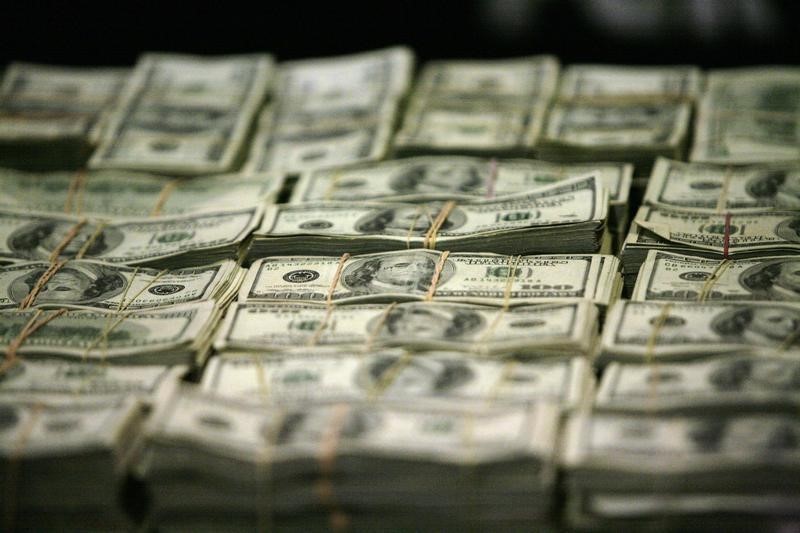Investing.com - The dollar pushed lower against the other major currencies on Thursday, after the release of rather weak U.S. economic reports and as investors began to eye Friday’s nonfarm payrolls data.
USD/JPY was up 0.14% at 113.62.
The Institute of Supply Management said its non-manufacturing purchasing manager's index fell to 53.4 last month from 53.5 in January, compared to forecasts for a reading of 53.2.
Separately, the U.S. Census Bureau said factory orders increased by 1.6%, worse than forecasts for an advance of 2.0%. Factory orders fell 2.9% in December.
Earlier Thursday, the U.S. Department of Labor said the number of individuals filing for initial jobless benefits in the week ending February 27 increased by 6,000 to 278,000 from the previous week’s total of 272,000. Analysts expected jobless claims to fall by 1,000 to 271,000 last week.
EUR/USD gained 0.51% to 1.0925.
Data on Thursday showed that euro zone retail sales increased by 0.4% in January, above forecasts for a rise of 0.1%.
Year-over-year, retail sales rose 2.0% in January, beating expectations for a gain of 1.3% and after rising 2.1% in the preceding month.
But the euro remained under pressure after European Central Bank board member Benoit Coeure signaled Wednesday that the ECB will ease monetary policy this month.
Coeure said it was “vital” to stimulate economic growth and boost inflation after prices in the euro zone fell 0.2% in February.
The dollar was lower against the pound and the Swiss franc, with GBP/USD up 0.48% at 1.4145 and with USD/CHF down 0.49% at 0.9917.
Markit said its U.K. services PMI declined to 52.7 last month from a reading of 55.6 in January. It was the lowest reading since March 2013. Analysts had expected the index to dip to only 55.1 in February.
Meanwhile, the Australian and New Zealand dollars were stronger, with AUD/USD up 1.01% at 0.7368 and with NZD/USD climbing 0.91% to 0.6734.
The Aussie was boosted after the Australian Bureau of Statistics earlier reported that the trade deficit narrowed to A$2.937 billion in January from A$3.524 billion in December, whose figure was revised from a previously estimated deficit of A$3.535 billion.
Analysts had expected the trade deficit to narrow to A$3.100 billion in January.
USD/CAD edged down 0.25% to 1.3385.
The U.S. dollar index, which measures the greenback’s strength against a trade-weighted basket of six major currencies, was down 0.43% at 97.78, pulling away from the previous session’s one-month high of 98.59.
